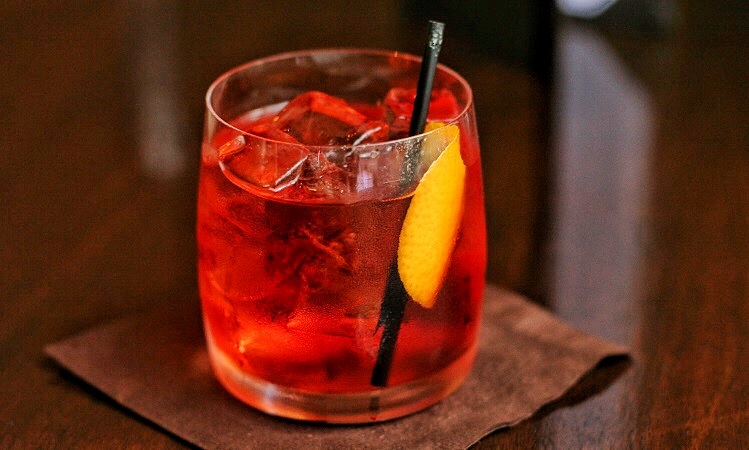Negroni Week is June 4-10. Learn more.
When does a Negroni cease to be a Negroni?
That’s a question I found myself wondering three weeks ago as Enzo Cangemi, a wonderfully moustachioed Sicilian bartender, served sample-size cocktails to a lecture hall at the Boston Center for Adult Education. If anyone was qualified to answer that question, it’s Enzo—he’s a Campari brand ambassador–and that day he was teaching a seminar entitled “I Dare You to Ruin my Negroni” as part of Thirst Boston.
Enzo began with the history of the Negroni. It’s a murky origin story with several competing versions, all of which seem to involve an Italian count. In his telling, Count Camillo Negroni was an Italian nobleman who traveled to the United States to be a rodeo cowboy in the last days of the Old West. The count returned to Florence in 1905 and found the cocktail of the hour, The Americano, to be too tame for his tastes. So he asked a bartender at Florence’s Caffe Casino for an Americano to be made “Negroni Robusto”–more potent with the addition of gin. This proto-Negroni was made with Campari, gin, vermouth, a splash of soda, orange and lemon. However, the Count asked for his next drink to be made without lemon or soda to avoid diluting its strength.
As he told his story Enzo demonstrated his technique for making a proper Americano and Negroni, and samples were brought out for the audience to enjoy. Next we tried a Negroni Sbagliato (literally translated as “wrong Negroni”), made with equal parts vermouth and Campari and topped with ice and sparkling wine. To finish Enzo produced a Negroni variant entirely devoid of Campari. This was his take on the “Negroni Bianco,” made with equal parts gin, white vermouth, a sweet gentian liqueur called Aveze, and finished with a dash of cucumber bitters.
Enzo suggested a range of other bold Negroni variants. There is the Negroski, which trades gin for vodka, and the Old Pal, which favors white vermouth over red and substitutes rye whiskey for gin. There’s even a way to make a Negroni Sbagliato with IPA in place of sparkling wine. He also provided some tips for balancing out variants. If you skip Campari entirely, find yourself a more fortified red vermouth. If you’re using white vermouth, add sweetness with a half ounce of simple syrup.
I don’t consider myself to be a Negroni purist by any means. I’m quite fond of Boulevardiers, and I’ve been treating myself to Mezcal Negronis at home for some time. But the question did come to mind: when does a cocktail stop being a Negroni variation, and simply become… another cocktail of a different name?
My own simple answer: to be in the Negroni family it must contain three or more central ingredients made in equal proportion, with Campari or a similar amaro or apertif serving as its muse. That leaves a lot of room for interpretation. And I’m certainly okay with that.
This article originally ran on June 6, 2016.



